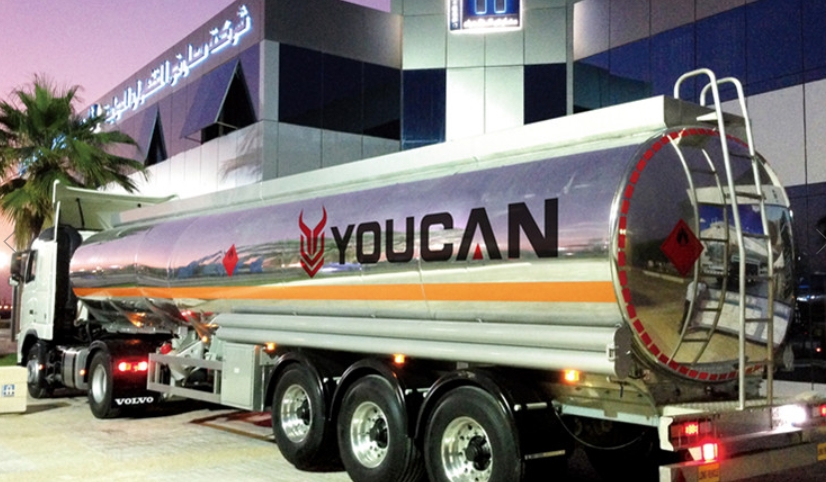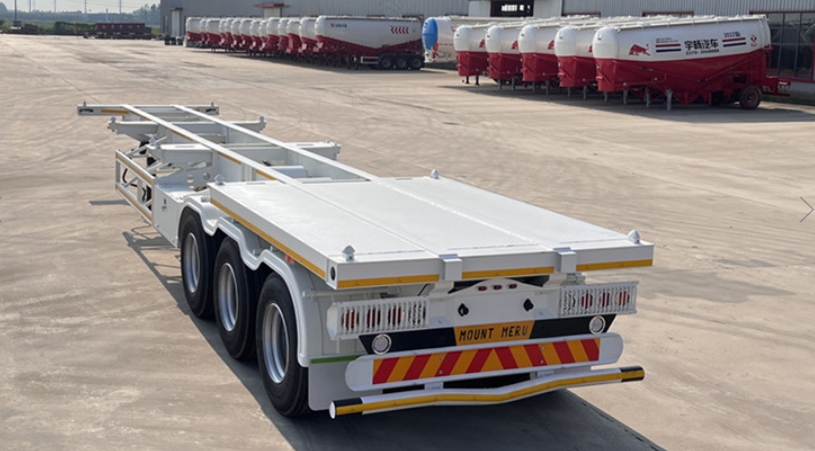Interlink Trailers User and Buyer's Guide
What are Interlink Trailers ?
Interlink trailers might not be a household name, but they are undoubtedly essential in the world of transportation and logistics. As highways and transportation networks expand across the globe, the demand for efficient and versatile trailer designs increases. In this article, we'll explore what interlink trailers are, their working mechanism, the benefits they offer, and their application in various industries.
What is an Interlink Trailer?
An interlink trailer, also known as a combination trailer, refers to a set of two or more trailers connected to a single towing vehicle. Each trailer is hitched to the other through a special coupling mechanism that enables them to move in a coordinated manner. The primary objective of interlink trailers is to enhance the payload capacity of the towing vehicle, thereby improving the transportation efficiency without increasing the number of trucks on the road.
How Interlink Trailers Operate
The functionality of interlink trailers relies on the robust coupling system that links multiple trailers together. This system allows a high level of articulation and flexibility, enabling the trailers to navigate through different terrains and sharp corners without getting detached. The connection points are designed to withstand various stresses, ensuring minimal risk of detachment or failure during transit.
Benefits of Interlink Trailers
There are several advantages of using interlink trailers, such as:
Increased payload capacity: By connecting multiple trailers, interlink trailers allow for the transport of significantly larger loads, maximizing the towing vehicle's full potential.
Reduced transportation costs: With the ability to transport more goods per journey, interlink trailers help cut down fuel expenses, manpower, and the number of vehicles required for transportation.
Enhanced maneuverability: Despite having multiple trailers attached, the articulated coupling system allows for seamless steering and optimal control of the vehicle.
Reduced carbon footprint: Consolidating the transport of goods into fewer trips helps in reducing CO2 emissions.
Applications of Interlink Trailers
Interlink trailers are used in a variety of industries, including:
Agriculture: They are often utilized in the agricultural sector for transporting heavy farming equipment, livestock, and harvested goods.
Logistics: They are utilized in logistics for the transportation of large cargo, including palletized goods, containers, and bulk items.
Construction: Interlink trailers are highly beneficial in the construction industry, where they can transport raw materials, heavy machinery, and equipment.
In summary, interlink trailers are an innovative solution for efficient and convenient goods transportation, providing numerous benefits for multiple industries. Through increased payload capacity and reduced transportation costs, interlink trailers represent the future of the transportation and logistics industry.
What do Interlink Trailers do?
Interlink trailers, also known as multi-axle interconnected trailers, are specialized types of transport vehicles designed to maximize the carriage of goods more efficiently and economically. Due to their unique design and construction, they have gained immense popularity in the transportation industry. In this article, we will explore the various aspects and advantages of Interlink trailers, as well as their diverse applications in different industries.
Design and Composition
Interlink trailers consist of two or more separate trailers connected by a coupling system, which allows them to function as a single unit while maintaining flexibility and maneuverability. The interconnected multiple axle system enables these trailers to distribute their load more evenly. This helps to minimize pressure on individual axles and allows them to safely carry heavy loads over long distances.
Advantages of Interlink Trailers
Increased Payload Capacity: Interlink trailers have a higher payload capacity as compared to traditional single-unit trailers. This increased capacity translates to fewer trips needed to transport equivalent amounts of cargo, leading to reduced transportation costs and fuel consumption.
Better Traction and Stability: Due to their unique design, Interlink trailers provide increased traction and stability on the road, which is particularly beneficial when negotiating sharp turns or traversing rough terrains.
Enhanced Maneuverability: With the interconnected axle system, these trailers are more maneuverable than their single-unit counterparts. Improved mobility contributes to safer driving and allows operators to navigate more complex environments, such as narrow or congested roads.
Economical: As Interlink trailers can transport larger payloads, they require fewer trips to carry the same amount of cargo. By decreasing the number of runs needed, businesses save considerable amounts of money on fuel and operational expenses over long distances.
Less Environmental Impact: Reducing the number of trips needed to transport a certain volume of cargo contributes to lowering carbon emissions and reducing the overall environmental impact of transportation.
Applications across Various Industries
Interlink trailers have proven to be invaluable in a wide range of industries, including:
Agriculture: They are commonly used to transport bulk agricultural products like crops, fertilizers, and animal feed, offering increased payload capacity for transporting these heavy materials.
Mining: The durable design and increased payload capacity of Interlink trailers make them ideal for transporting raw materials and equipment within the mining industry.
Construction: Their sturdy construction and high payload capacity make them well-suited for transporting large amounts of building materials or heavy machinery between job sites.
Manufacturing: Interlink trailers can efficiently transport bulk raw materials and finished goods, streamlining the supply chain process and reducing transportation-related bottlenecks.
In conclusion, Interlink trailers have revolutionized the transportation industry by offering increased payload capacity, improved maneuverability, exemplary stability, and cost-effectiveness. Their versatile applications across various industries make them integral to modern logistical operations.
Interlink Trailers Common Technical Troubleshooting FAQs
Q1: My trailer lights aren't working, what should I do?
A1: Check for any blown fuses, damaged wiring, or loose connections. If the issue persists, consider replacing the light bulb or seeking professional assistance.
Q2: Why are my trailer brakes not functioning properly?
A2: Inspect brake components, such as the brake controller, wiring, and brake magnets. Also, test for a faulty ground connection. If necessary, consult a trained technician.
Q3: How do I adjust my trailer's tire pressure?
A3: Refer to the manufacturer's recommendations for specific tire pressure levels. Use a tire pressure gauge to check and adjust the pressure accordingly.
Q4: What is the right way to load my trailer?
A4: Distribute cargo evenly on the trailer bed, keeping the center of gravity low. Secure the load with proper restraints to avoid shifting during transit.
Q5: How often should I lubricate my trailer's wheel bearings?
A5: Lubricate wheel bearings annually or every 12,000 miles for optimal performance. Consult your owner's manual for specific guidelines.
How to Maintain Interlink Trailers
Interlink trailers are designed for heavy loads and long-distance transport. To ensure the safety and longevity of your trailers, proper maintenance is essential. This guide covers basic maintenance tasks to keep your interlink trailers in top condition.
Regular inspections: Check the trailers for visible damages, such as dents, rust, or wear and tear. Inspect the tires, brakes, lighting, and couplings to ensure they are in working order.
Tire maintenance: Keep tires properly inflated, rotate them regularly, and monitor the tread depth to prevent blowouts or uneven wear.
Lubricate moving parts: Regularly lubricate the axle, fifth wheel, and kingpin to minimize friction and wear.
Brake system: Inspect brake pads, drums, and air lines for wear, leaks, or corrosion. Replace any damaged or worn-out parts.
Coupling system: Inspect the pintle hook, eye, and coupler for signs of wear or damage, and tighten any loose bolts.
Lighting system: Check and replace any burnt-out or damaged lights, including indicators and brake lights.
Electrical system: Inspect wiring and connectors for wear, damage, or corrosion. Apply dielectric grease to prevent moisture buildup.
Suspension: Inspect leaf springs, hangers, and airbag suspension for cracks, wear, or corrosion. Replace damaged parts.
Corrosion prevention: Clean and inspect metal surfaces for rust. Apply anti-corrosion treatments as necessary.
Regular servicing: Follow the manufacturer's recommended service intervals to keep the interlink trailers in optimal condition.
By regularly maintaining the components of your interlink trailers, you can prevent potential accidents, costly repairs, and extend the life of your investment.
Suppliers of Interlink Trailers
The Youcan trailer was established in 1999 and has rich experience in Interlink Trailers production and provides complete Interlink Trailers solutions for different applications. The company has 23 years of experience and specializes in providing aluminum tank trucks, fuel tank trucks, bulk cement tank trucks, dump trailers, tipper trailers, pile/sidewall trailers, flatbed trailers, low bed trailers, container transport trailers, cargo trailers, interlock trailers and hundreds of other products.
Welcome to contact us to get the latest price of new semi-trailers. Competitive price, reliable quality, waiting for you to buy!

 WhatsApp
WhatsApp
 sales@youcantrailer.com
sales@youcantrailer.com
 +8615203709888
+8615203709888


